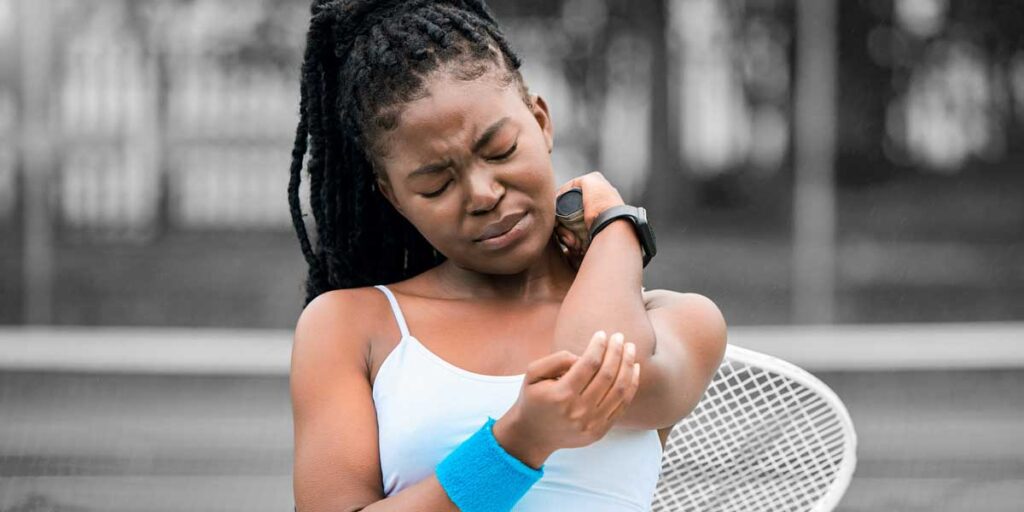Sports Injuries: How Imaging Can Help You Get Back in the Game
Participating in sports provides a variety of health benefits, but it also comes with the risk of injury. When an injury occurs, you want to start treatment as soon as possible to get back to the sport you love. That process starts with a diagnosis. In many cases, a doctor will determine a diagnosis, at least in part, with medical imaging, such as an MRI or CT scan.
Common sports injuries
Sports can cause injuries from head to toe. Most sports injuries affect the bones and soft tissues, such as the muscles, tendons, and ligaments.
Some sports injuries happen suddenly—these are acute injuries. On the other hand, certain injuries occur because of overuse. Known as chronic injuries, these develop over weeks, months, or years when you stress the same bones or soft tissues repeatedly without enough recovery time.
Affecting both weekend warriors and athletes who practice and play almost daily, common sports injuries include:
- Achilles tendon injuries. Tendinitis—tendon inflammation—can affect the Achilles tendon, which runs from your calf to your heel. In some cases, tendinitis can lead to a tendon rupture or tear.
- Also known as broken bones, fractures can happen because of a sudden blow or repeated stress. Stress fractures—small bone cracks—are common in runners.
- Golfer’s elbow. Tendinitis that affects the inner elbow often occurs in golfers because they have to grasp and swing a club.
- Ligament tears. Twisting or overstretching a ligament can cause a tear. Athletes who jump or suddenly change direction, such as football, basketball, and soccer players, are at risk for anterior cruciate ligament tears in the knee.
- Rotator cuff injuries. A group of muscles and tendons in the shoulder, the rotator cuff can become inflamed or tear. These injuries often affect baseball pitchers and swimmers.
- Stretched or torn ligaments, sprains can occur during falls or from twisting or getting hit in a joint.
- A strain can occur if you overstretch a muscle or tendon, which can lead to a tear.
- Tennis elbow. Swinging a tennis racket or repeatedly bending your elbow can cause tendinitis.
The role of imaging in making a diagnosis
To determine what type of injury you have and how to treat it, your doctor will conduct an evaluation. This is the process of gathering information to arrive at a diagnosis. An evaluation is different from a screening, in which your doctor determines your risk for an injury.
When evaluating a sports injury, your doctor will want to know how it happened and what symptoms you experienced. The doctor will examine the injured area. In many cases, another important piece of the puzzle is using medical imaging to look inside the body for evidence of injury.
Many different types of imaging can provide valuable diagnostic information. These scans give your doctor important information about inflammation, breaks, and tears that can be used to treat the cause of your pain.
- MRI scans can help identify tears to the meniscus, rotator cuff, and cartilage (labrum), as well as various other conditions that cause pain including joint damage, sprains, fractures, and torn muscles.
- CT scans are helpful to analyze the bones and soft tissues for fractures and issues.
- Ultrasound is a particularly useful tool when identifying tendinitis and other conditions related to tendons and joints.
- X-rays are geared toward diagnosing concerns with bone, including breaks, fractures, bone spurs, and more.
- Arthrograms help doctors understand the causes of knee, shoulder, and other types of joint pain.
The type of imaging your doctor orders will depend on your suspected injury. Some imaging types are better at showing soft tissue than bone, and vice versa. No matter what type of scan your doctor orders, don’t delay—the images could hold the key to a diagnosis.
Have a doctor’s order for an MRI, CT, or another type of imaging for a sports injury? Learn more about these and other services, and request an appointment at an American Health Imaging center near you.
